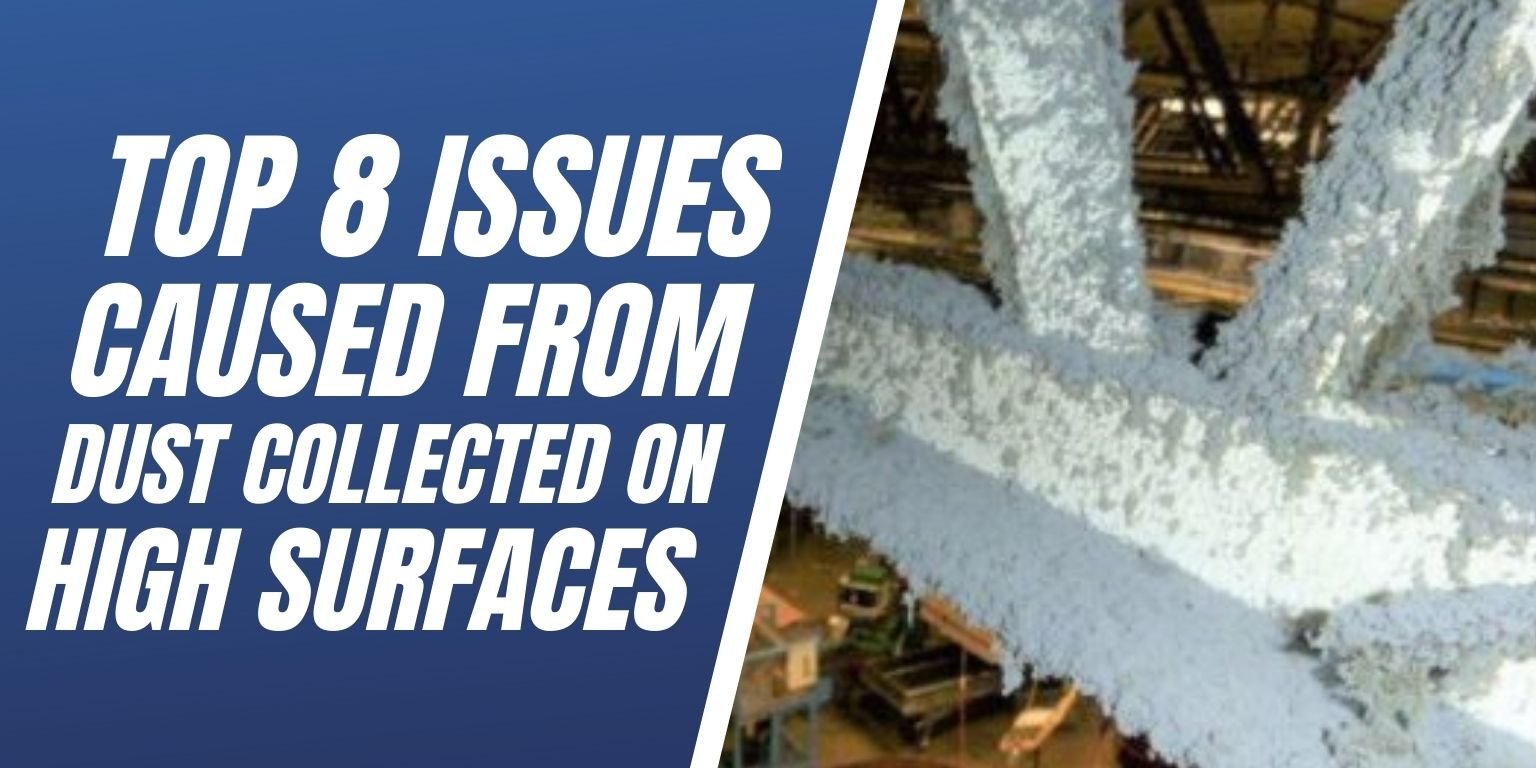
Cleaning high surface areas is difficult, if not impossible, to do when machinery is operating and employees are present. This is why we emphasize the importance of high surface cleaning during routine shut down season. It becomes much easier to clean this dust, and if it is combustible, it can be a fire explosion hazard. OSHA requires companies to clean it when it reaches 1/32 in thickness, and in some of these hard to see areas the dust can build up to be much thicker than this. But what are other issues that may be present from dust, dirt and other debris that has been allowed to collect on high surfaces?
Top 8 Issues Caused From Dust Collected on High Surfaces
Quality Control Issues
- Vibrations and air movement in the building can shake loose the built-up dust, which will fall down to contaminate production areas below. This can lead to higher-than-expected numbers of quality control issues, or even damage sensitive machinery.
- Visible dirt can make the workplace look unattractive and dingy, which is an unappealing environment to work. Not only does it look bad, but it could cause employees to have serious health issues, which can lower productivity.
- It’s also important to clean these surfaces to prepare for painting or other maintenance work.
HVAC Efficiency Issues / Employee Health
- Collected dust can create the ideal breeding ground for mites, mold, bacteria, viruses, and even insects or rodents. In just 1 gram of dust there can be between 100 and 500 dust mites, so just imagine the number of mites in all the dust collected in your rafters. These mites and mold cause allergic reactions in some people; bacteria and viruses spreading through the building make your employees sick. All of this contributes to poor indoor air quality, which the EPA says is a leading environmental threat and a major cause of airborne sicknesses.
- Chunks of this dust build up throughout the ventilation, clogging the HVAC system and making it work harder to move air through the building.
- Accumulated dust can also cause it to create foul odors, and start to break down the surface it’s on. In some cases, it results in rust or rot on the surface. If you’ve noticed an odd smell that won’t seem to go away, it might be dust rotting above your head.
Combustible Dust Hazard
- Certain types of dusts can pose a fire hazard when they collect in large enough areas. Many secondary explosions in factories have been caused by an explosive dust cloud forming when dust is knocked down from high surfaces. The NFPA says that just 1/32 inch of dust over as little as 5% of the surface area of a room creates explosion hazards- rafters, ceilings, and other high surfaces typically add up to more than 5% of the surface area of the room.
Code Required
- Lastly, based on this NFPA requirement, OSHA will inspect these areas for a build-up of dust, and will give expensive citations for any accumulations.
Therefore, rafter and ceiling cleaning will remove dust, dirt, grease, and other materials commonly found on the high surfaces of manufacturing and production facilities. Areas that should not go untouched when cleaning high surfaces include:
- Ceiling
- Ceiling Truss
- Rafters
- Conduit
- Lighting
- Exterior of ductwork
- Exhaust hood ventilation
- Beams
- Storage racks/shelving
- Fire suppression systems
- Ceiling Deck
- Piping
Cleaning high surface dust can improve health and safety of your work environment, eliminate an explosion hazard and avoid costly OSHA fines. Whether your facility is shutdown during this time or not, Hughes will work around your work schedule to help keep your facility clean.
Interested in learning more about high surface cleaning? Contact Us Here or call 888-845-3952 for pricing or for more information on high surface, rafter and ceiling cleaning.

